| Listing 1 - 10 of 12 | << page >> |
Sort by
|
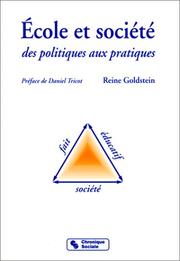
ISBN: 2850082392 Year: 1995 Publisher: Lyon : Chronique sociale,
Abstract | Keywords | Export | Availability | Bookmark
 Loading...
Loading...Choose an application
- Reference Manager
- EndNote
- RefWorks (Direct export to RefWorks)
Instructional systems --- Education --- Design pédagogique --- Education --- Design --- Political aspects --- Aspect politique
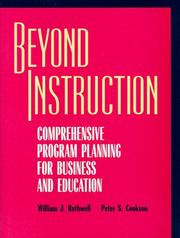
ISBN: 0787903280 Year: 1997 Publisher: San Francisco, Calif. : Jossey-Bass Publishers,
Abstract | Keywords | Export | Availability | Bookmark
 Loading...
Loading...Choose an application
- Reference Manager
- EndNote
- RefWorks (Direct export to RefWorks)
Employees --- Instructional systems --- Personnel --- Design pédagogique --- Training of. --- Design. --- Formation
Book
ISBN: 2296045367 9782296045361 Year: 2007 Publisher: Paris : Harmattan,
Abstract | Keywords | Export | Availability | Bookmark
 Loading...
Loading...Choose an application
- Reference Manager
- EndNote
- RefWorks (Direct export to RefWorks)
Cognitive learning --- Instructional systems --- Educational technology --- Apprentissage cognitif --- Design pédagogique --- Technologie éducative --- Design
Book
ISBN: 0030081718 9780030081712 Year: 1974 Publisher: New York (N.Y.): Holt, Rinehart and Winston
Abstract | Keywords | Export | Availability | Bookmark
 Loading...
Loading...Choose an application
- Reference Manager
- EndNote
- RefWorks (Direct export to RefWorks)
Teaching --- -Learning --- Design pédagogique --- Learning --- Instructional systems --- Design --- Learning. --- Design. --- Apprentissage --- Learning process --- Instructional design --- Comprehension --- Education --- Instructional systems - Design
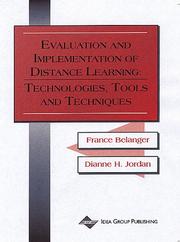
ISBN: 1878289632 Year: 2000 Publisher: Hershey, PA : Idea Group Pub.,
Abstract | Keywords | Export | Availability | Bookmark
 Loading...
Loading...Choose an application
- Reference Manager
- EndNote
- RefWorks (Direct export to RefWorks)
Book
ISBN: 0893973564 1850919577 Year: 1990 Publisher: London Kogan Page
Abstract | Keywords | Export | Availability | Bookmark
 Loading...
Loading...Choose an application
- Reference Manager
- EndNote
- RefWorks (Direct export to RefWorks)
Teaching aids --- Distance education --- Instructional systems --- Self-culture --- Teaching --- Enseignement à distance --- Design pédagogique --- Culture personnelle --- Enseignement --- Design --- Aids and devices --- Matériel didactique --- Enseignement à distance --- Design pédagogique --- Matériel didactique
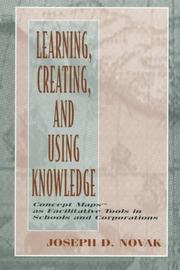
ISBN: 0805826254 0805826262 9780805826265 9780805826258 Year: 1998 Publisher: Mahwah, N.J. : L. Erlbaum Associates,
Abstract | Keywords | Export | Availability | Bookmark
 Loading...
Loading...Choose an application
- Reference Manager
- EndNote
- RefWorks (Direct export to RefWorks)
Learning, Psychology of --- Cognitive maps (Psychology) --- Instructional systems --- Constructivism (Education) --- Design --- Cartes cognitives --- Constructivisme (Education) --- Cognitive maps (Psychology). --- Constructivism (Education). --- Design pédagogique --- Learning, Psychology of. --- Lerarenopleiding --- Design. --- Algemeen. --- Psychologie de l'apprentissage --- Instructional systems - Design
Book
ISBN: 9782070779406 2070779408 Year: 2007 Publisher: Paris: Gallimard,
Abstract | Keywords | Export | Availability | Bookmark
 Loading...
Loading...Choose an application
- Reference Manager
- EndNote
- RefWorks (Direct export to RefWorks)
Qui ne s'est trouvé dérouté devant un mode d'emploi indéchiffrable, un schéma incompréhensible, un article dénué de sens ou un bouton de commande énigmatique ? Après Les Décisions absurdes, Christian Morel s'attaque dans ce nouveau livre à cette communication quotidienne que la société produit en masse et dont la qualité exécrable plonge le consommateur dans des abîmes de perplexité. Utilisant des grilles d'analyse simples empruntées à différents domaines des sciences humaines, il décrypte le langage et les mécanismes de cette information ordinaire (modes d'emploi, tableaux de commande, pictogrammes, graphismes, textes de vulgarisation) et explique pourquoi elle déçoit et irrite tant. Il en dégage plusieurs conséquences majeures : émergence d'un nouveau rôle social, les conseillers officieux d'usage, une fraction des usagers se transformant en experts improvisés qui aident les autres ; désarroi du consommateur, dont la portée économique est grandement sous-estimée ; statut paradoxal des nouvelles technologies. Partie d'une observation minutieuse des faits ordinaires, cette radioscopie de l'information quotidienne questionne au final tout un pan de notre monde moderne.
Signs and signboards. --- Instructional systems --- Information science. --- Communication --- Traffic signs and signals --- Picture-writing --- Enseignes --- Design pédagogique --- Sciences de l'information --- Signalisation routière --- Ecriture pictographique --- Design. --- Psychological aspects --- Aspect psychologique --- Signs and signboards --- Information science --- Design --- Design pédagogique --- Signalisation routière --- Instructional systems - Design
Book
ISBN: 9780415807968 Year: 2013 Publisher: New York Routledge
Abstract | Keywords | Export | Availability | Bookmark
 Loading...
Loading...Choose an application
- Reference Manager
- EndNote
- RefWorks (Direct export to RefWorks)
Ten Steps to Complex Learning presents a path from a training problem to a training solution in a way that students, practitioners (both instructional designers and teachers), and researchers can understand and easily use. Practitioners can use this book as a reference guide to support their design of courses, materials, or environments for complex learning. Students in the field of instructional design can use this book to broaden their knowledge of the design of training programs for complex learning.Now fully revised to incorporate the most current research in the field, this second edition of Ten Steps to Complex Learning includes user-friendly examples and case studies, and demonstrates the application of the Ten Steps in relation to the design of serious games, learning networks, social media, and new developments in educational neuroscience. "Ten Steps to Complex Learning presents in ten steps a path from a training problem to a training solution in a way that students, practitioners, (both instructional designers and teachers) and researchers can understand and use"--
hoger onderwijs --- didactiek --- 371.3 --- 484.21 --- Didaktiek. Onderwijsmethoden. Evaluatie van het lesgeven --- Onderwijsmethoden en onderwijsprocedures. Onderwijs- en opleidingssystemen. --- Didactische werkvormen --- 371.3 Didaktiek. Onderwijsmethoden. Evaluatie van het lesgeven --- EDUCATION --- Instructional systems --- Design pédagogique --- General. --- Computers & Technology. --- Design. --- Instructional design --- Design --- Onderwijsmethoden en onderwijsprocedures. Onderwijs- en opleidingssystemen
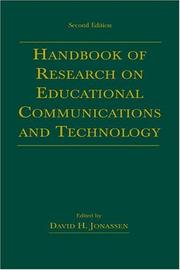
ISBN: 0805841458 Year: 2004 Publisher: Mahwah, N.J. : Lawrence Erlbaum,
Abstract | Keywords | Export | Availability | Bookmark
 Loading...
Loading...Choose an application
- Reference Manager
- EndNote
- RefWorks (Direct export to RefWorks)
The aim of this book is to comprehensively represent the research in the field of educational communications and technology. The editor's hope is that the reader will find this "Handbook" to be an important conceptual tool for constructing their own understanding of research in this field, and that it will function as a catalyst for other research efforts in educational communications and technology. There are some changes in the topics represented in this second edition of the "Handbook". All of the chapters that were revised and updated are included in this second edition, but new chapters have also been added based on the ideas of other scholars in the field. This field is assimilating and accommodating (to use Piagetian constructs) at an awesome pace. The focus on practice communities, computer-supported collaborative learning, and teachable agents, for a few examples, did not exist in the field when the first edition of the "Handbook" was published. But they are important concepts in the field today. The ideas that define this field represent a moving target that changes by the month, if not more frequently. So, the second edition represents the best compilation of research in the field that was possible in 2002. (PsycInfo Database Record (c) 2022 APA, all rights reserved)
Educational technology --- Communication in education --- Telecommunication in education --- Instructional systems --- Technologie éducative --- Communication en éducation --- Télécommunication en education --- Design pédagogique --- Research --- Handbooks, manuals, etc. --- Design --- Recherche --- Guides, manuels, etc. --- -Educational technology --- -Instructional systems --- -Telecommunication in education --- -#PBIB:2004.1 --- Distance education --- Education --- Learning systems --- Teaching --- Instructional technology --- Technology in education --- Technology --- Educational innovations --- -Research --- Aids and devices --- Lerarenopleiding --- naslagwerken --- naslagwerken. --- Technologie éducative --- Communication en éducation --- Télécommunication en education --- Design pédagogique --- #PBIB:2004.1
| Listing 1 - 10 of 12 | << page >> |
Sort by
|

 Search
Search Feedback
Feedback About UniCat
About UniCat  Help
Help News
News